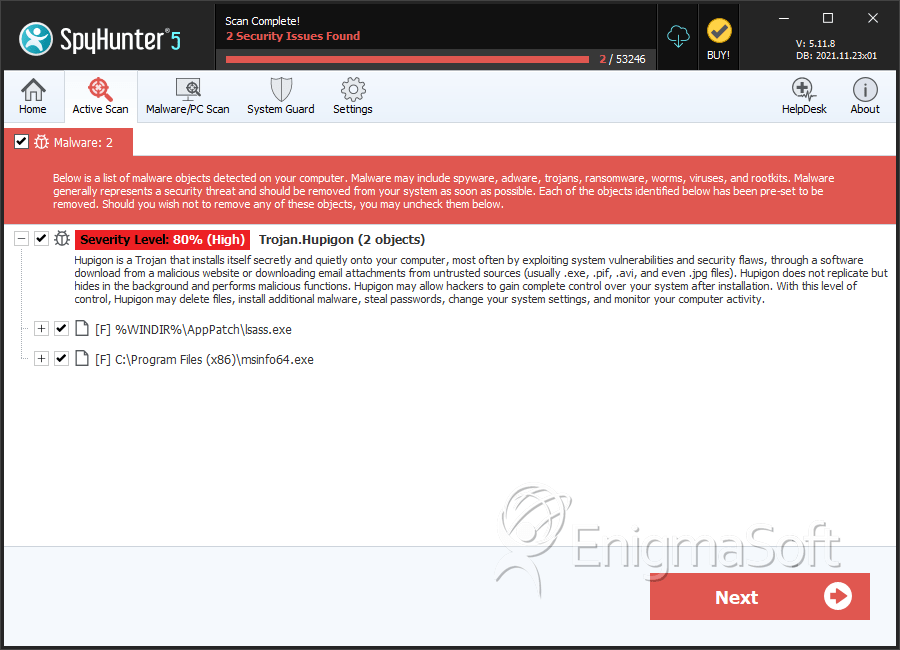Backdoor.Linfo
Threat Scorecard
EnigmaSoft Threat Scorecard
EnigmaSoft Threat Scorecards are assessment reports for different malware threats which have been collected and analyzed by our research team. EnigmaSoft Threat Scorecards evaluate and rank threats using several metrics including real-world and potential risk factors, trends, frequency, prevalence, and persistence. EnigmaSoft Threat Scorecards are updated regularly based on our research data and metrics and are useful for a wide range of computer users, from end users seeking solutions to remove malware from their systems to security experts analyzing threats.
EnigmaSoft Threat Scorecards display a variety of useful information, including:
Ranking: The ranking of a particular threat in EnigmaSoft’s Threat Database.
Severity Level: The determined severity level of an object, represented numerically, based on our risk modeling process and research, as explained in our Threat Assessment Criteria.
Infected Computers: The number of confirmed and suspected cases of a particular threat detected on infected computers as reported by SpyHunter.
See also Threat Assessment Criteria.
| Threat Level: | 80 % (High) |
| Infected Computers: | 28 |
| First Seen: | May 17, 2012 |
| Last Seen: | June 12, 2022 |
| OS(es) Affected: | Windows |
Backdoor.Linfo is a backdoor Trojan that opens a back door on the infected PC system. Once Backdoor.Linfo is run, it creates some specific files. Backdoor.Linfo then creates the specific mutex 'ExplorerIsShellMutex' so that only one instance is running on the compromised PC. Then, Backdoor.Linfo opens a back door by connecting to the particular locations
[http://]www.ancold.org.au/mycfg/mycmd/[ENCODED HO[REMOVED] and [http://]www.ancold.org.au/mycfg/myscr/Myup[REMOVED] and waits for directions from remote hackers. Remote hackers can perform lots of harmful actions such as download an updated configuration file, change the frequency of the intervals in which the computer contacts the remote server, create and delete directories, shut down or restart the targeted machine, log off the current user, execute shellcode, change command and control servers, and other. Eliminate Backdoor.Linfo immediately after detection in order to protect your machine from harm.
Table of Contents
SpyHunter Detects & Remove Backdoor.Linfo

File System Details
| # | File Name | MD5 |
Detections
Detections: The number of confirmed and suspected cases of a particular threat detected on
infected computers as reported by SpyHunter.
|
|---|---|---|---|
| 1. | lsass.exe | cc97965b842a77fc4b2b45ec7eb630f9 | 17 |
| 2. | msinfo64.exe | af5e9c258a7df4e5affae8e830af7704 | 4 |
| 3. | %Windir%\linkinfo.dll | ||
| 4. | %ProgramFiles%\Internet Explorer\lg.dat | ||
| 5. | %Windir%\tp.dat | ||
| 6. | %Windir%\tp.ds |


Submit Comment
Please DO NOT use this comment system for support or billing questions. For SpyHunter technical support requests, please contact our technical support team directly by opening a customer support ticket via your SpyHunter. For billing issues, please refer to our "Billing Questions or Problems?" page. For general inquiries (complaints, legal, press, marketing, copyright), visit our "Inquiries and Feedback" page.